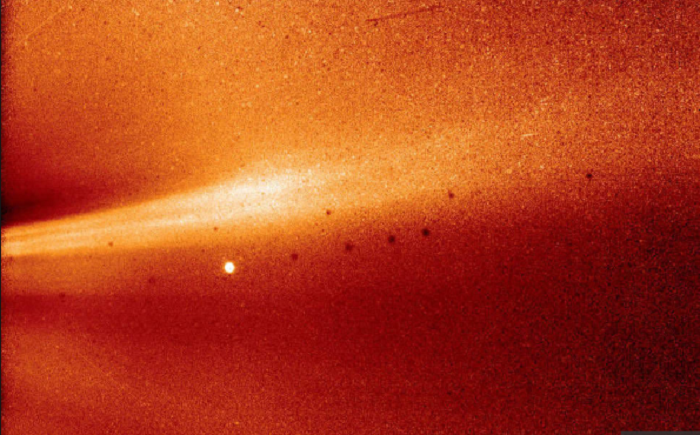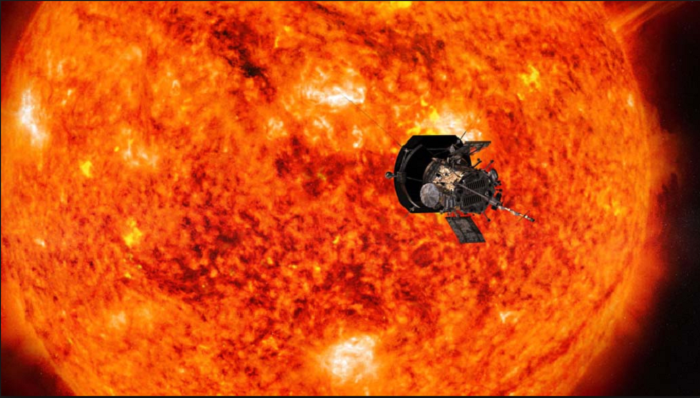Coming closer to the Sun: NASA's Parker Solar Probe Basks in the Sun

December 18: NASA’s Parker Solar Probe came within 15 million miles of the Sun’s surface, traveling at the record-breaking speed of 213,200 miles per hour, completing its first solar encounter phase and rewarding scientists with the first picture ever taken from within our star’s atmosphere. Heliophysicists (Scientists who study the Sun!) have been waiting more than 60 years for a mission like this to be possible.
Parker Solar Probe is journeying closer to the Sun than any of our spacecraft before, in order to help us solve the solar mysteries waiting in the corona (the Sun’s outer atmosphere). In particular, “Why is the atmosphere hotter than the surface? Why is the solar wind continuously accelerated?” These are important questions considering the Sun is both essential for life and a potential danger through its magnetized materials’ interference with our satellites, electronics, and astronauts in orbit. Scientists on the craft’s team presented the initial set of new data from its encounter on December 12th during the 2018 American Geophysical Union meeting.
The Parker Probe’s team began downloading data from its journey on December 7th this year, but the actual Sun passage took place about a month earlier, from October 31st through November 11th. The delay was caused by the nature of the Sun itself as a wide band radio source communications are not possible anytime a craft is in front, behind, or to the side of it. Parker Solar Probe was about 16.9 million miles from the Sun’s surface when this image was taken on Nov. 8, 2018.

While there, it will be able to specifically collect data about activity caused by the Sun itself, thereby enabling scientists to revise their models accordingly. The probe was given a thermal heat shield that can withstand the 2,500 degrees Fahrenheit temperatures it will be exposed to while maintaining a mid-80s F temperature for its instruments, to collect data surrounding these questions.
As Parker Solar Probe circles closer and closer to the Sun, NASA is looking forward to retrieving data to help us address some of our longest unanswered questions about our Sun!